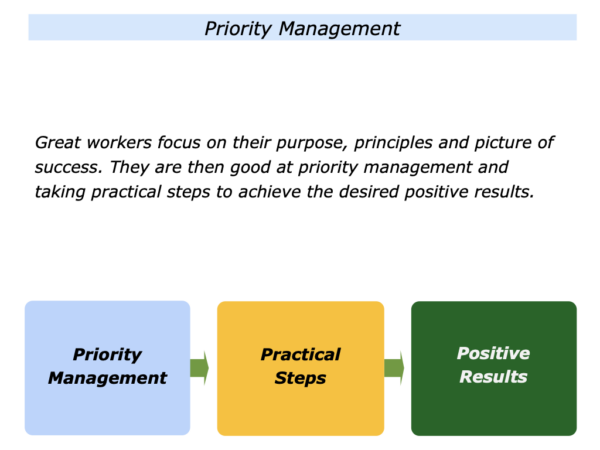
Great workers focus on their purpose, principles and picture of success. They are then good at priority management and taking practical steps to achieve positive results. Let’s explore how to this works in action.
Imagine that a person is clear on their purpose and the principles they want to follow. They may then translate this into doing a specific piece of work – such as a creative project or working to achieve a compelling goal.
Such workers then establish clarity. They clarify the specific results to achieve and translate these into a clear picture of success. They also clarify the strategies they want to follow and the benefits of achieving the goals.
Different people do this in different ways. Some people use the following framework. You would, of course, have your own approach to setting clear goals.
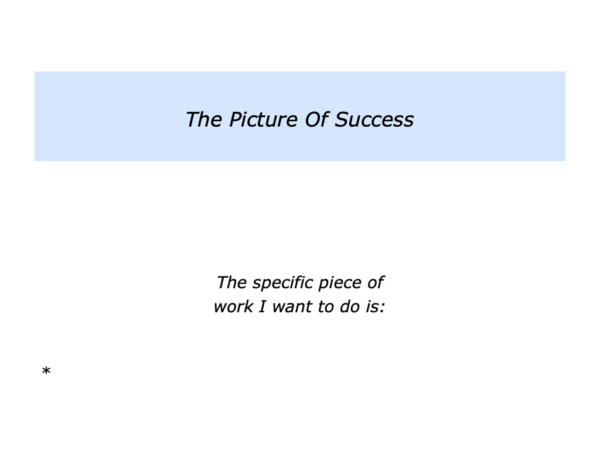
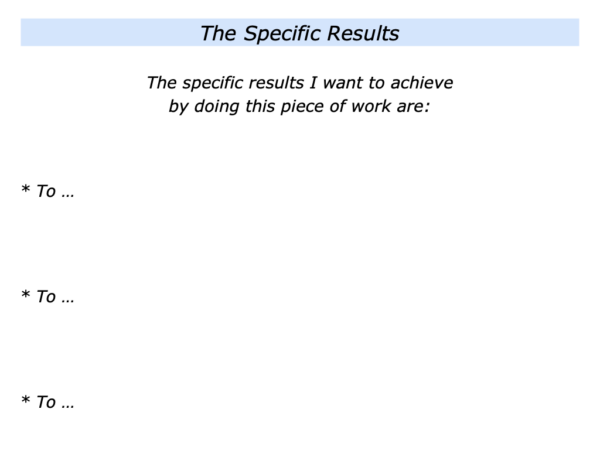
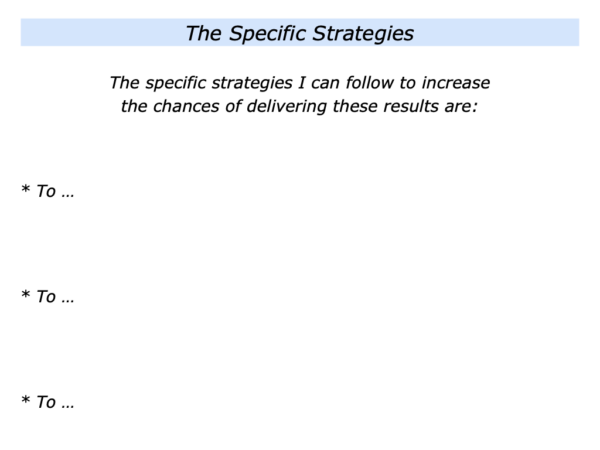
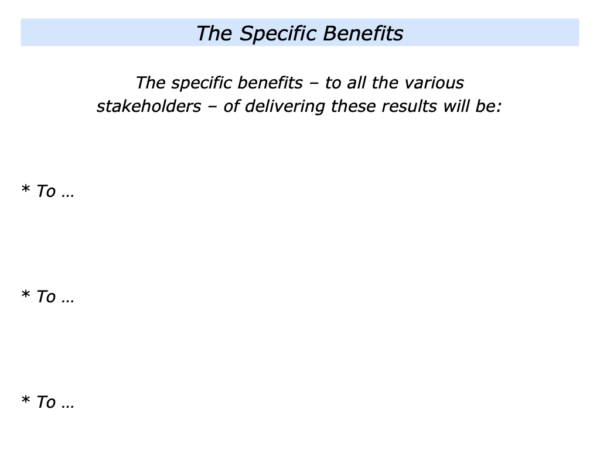
Imagine that a person has clarified these things. They will then move on to the next stage.
Priority Management
Priority management is one of the keys to doing effective work. Some people talk about the importance of time management. That is fine, but it is vital:
To focus on the key things to do – in order of priority – that will increase the chances of achieving the goals.
Great workers are good priority management. Bearing these priorities mind, they then do effective work by channelling their time and energies properly to deliver the goods.
Different people use different models for clarifying the key priorities. Some people work through the following stages.
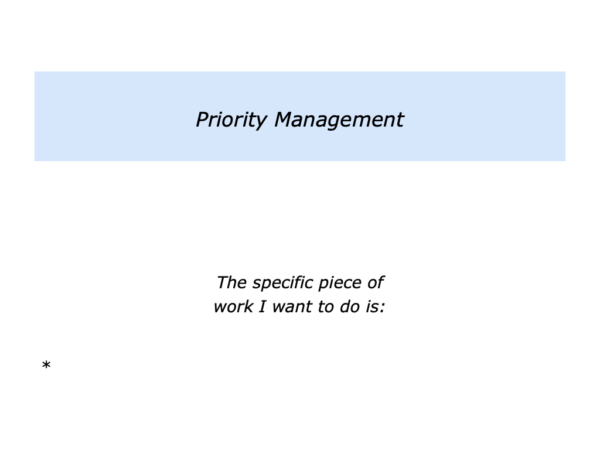
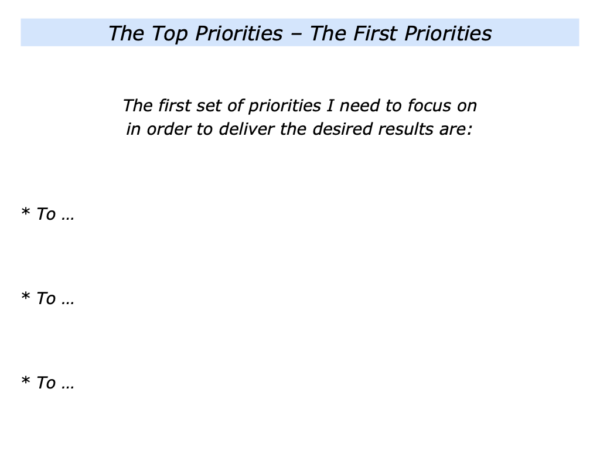
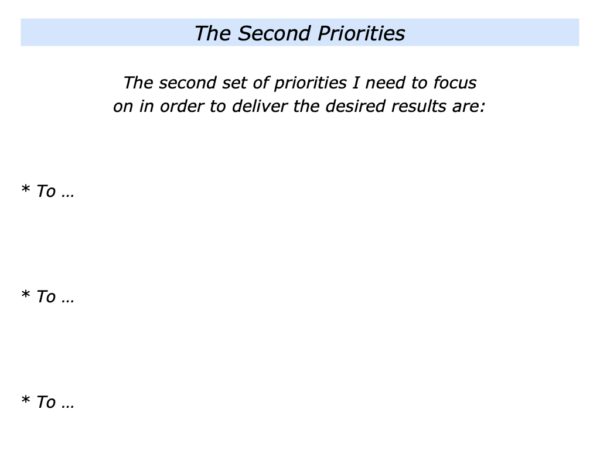
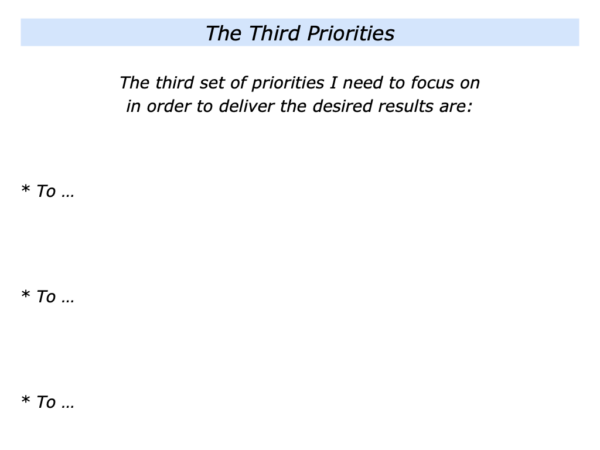
As mentioned earlier, different people use different frameworks for clarifying their priorities. The following section describe some of these approaches. Whatever model a person uses, however, one of the keys is to ask:
“What are the top priorities I need to focus on
in order to increase the chances of success?”
The Focusing On Your
Life Goals Approach
Positive people aim to build on what they can control and manage what they can’t. They also keep focusing on their life goals.
There have been many books on this topic. One of the most influential was Alan Lakein’s 1970 book How To Get Control Of Your Time And Your Life. These ideas seem commonplace now, but many people found them helpful. Here are some ideas from the book.
Keep focusing on your lifetime goals – put these in a place where you can see these each day.
Clarify your A, B and C priorities – remember these may evolve over time.
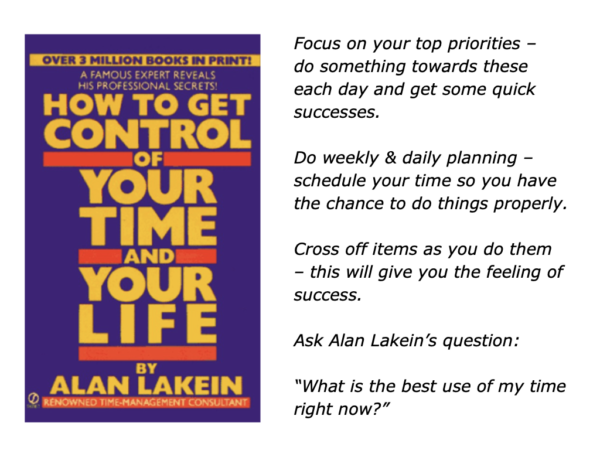
The following pages show one way that a person can apply Alan’s approach. This can also help them with their priority management. A person can use this:
To focus on their life goals – such as clarifying their A, B and C goals together with the sub-goals under each category;
To focus on their priorities – such as the specific actions they want to take towards achieving their A, B and C goals.
Different people applied Alan’s ideas in different way. The next pages describe one framework that people use to focus on their priorities.


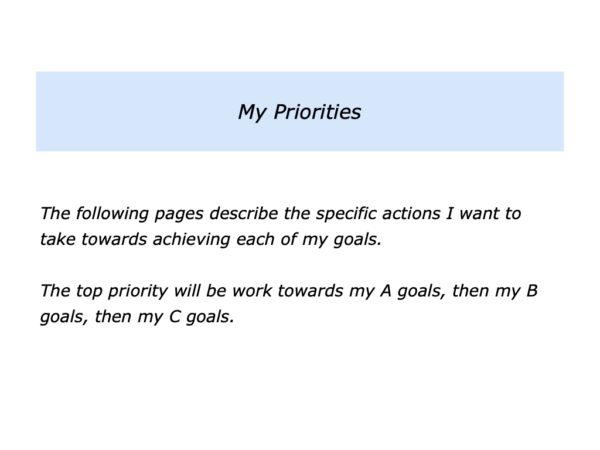
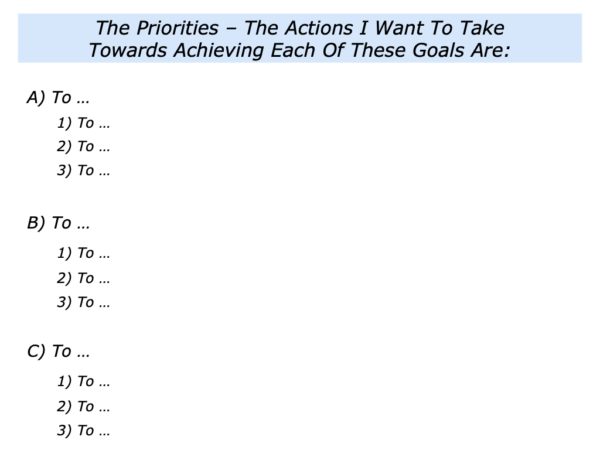
The Dwight Eisenhower Matrix
President Eisenhower had an approach that has since been adapted and developed by other people. One model was popularised by Stephen Covey in his book The 7 Habits of Highly Effective People.
The approach divides tasks into certain quadrants based on the importance and urgency. You can then look at each task and choose which action you want to take. Here is one adaptation of the model.
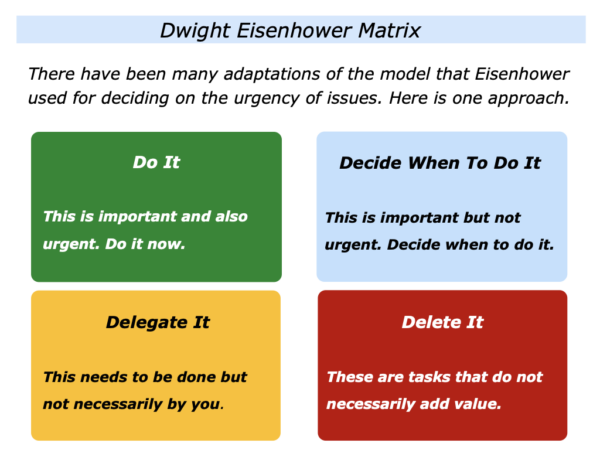
Imagine that a person has clarified the priorities they want to focus on to do a piece of work. They may then move on to the next stage.
Practical Steps
Great workers focus on their priorities and take practical steps to make these happen. Different people do this in different ways. Some explore the following themes.
Bearing in mind the results to achieve, what is the first priority I want to focus on? What are the practical steps I can take to make this happen and work towards the goals?
What are the key strategies I can follow to increase the chances of success? How can I translate these into action? How can I get a quick win? How can I then do my best to achieve the picture of success?
Great workers may use the following framework for taking practical steps to pursue their first priority. They then expand this to cover the other priorities.
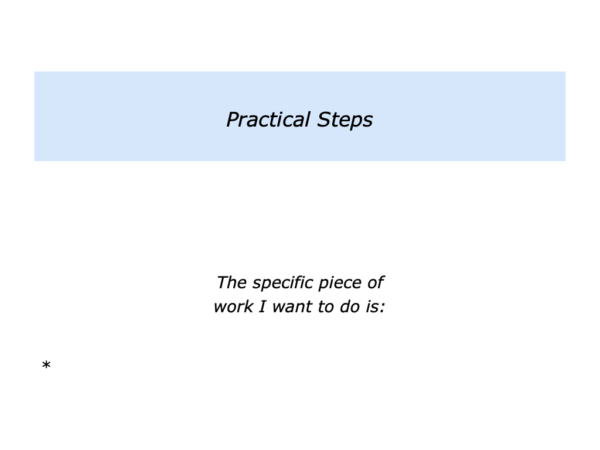
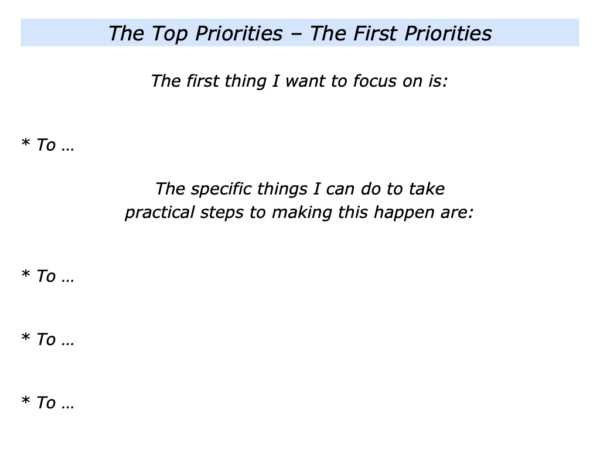
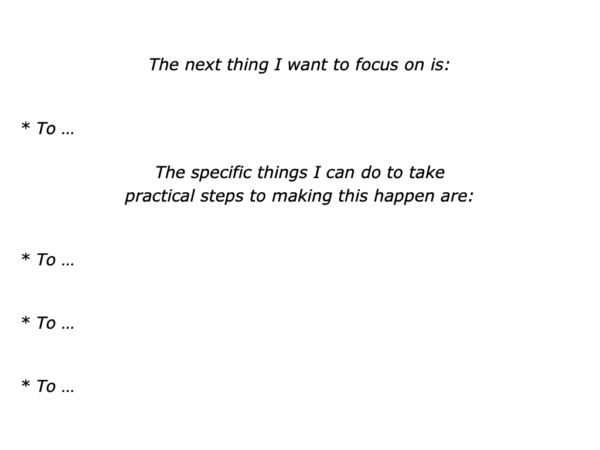
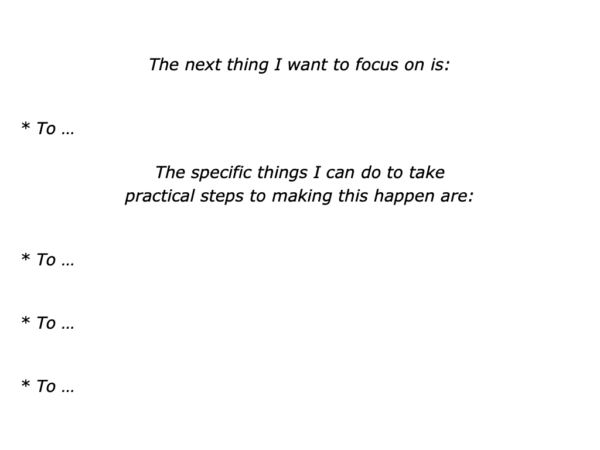
Positive Results
Great workers pursue each of the priorities and do they best to achieve the desired positive results. They also take time to reflect and make sure they are still focusing on the things that are most likely to deliver the goods.
Different people do this in different ways. Some use the following framework: a) to perform superb work; b) to continue to focus on priority management. They explore the following themes.
Performing Superb Work
Bearing in mind the priority I am pursuing, how can I continue to perform superb work? What am I doing well? How can I build on these things? What can I do better and how? What else can I do to pursue this priority and achieve the desired positive results?
Priority Management
Bearing in mind the piece of work I am doing, is it still relevant to work towards delivering the original specific results? Has anything happened to mean that the aims have changed or evolved?
If so, what is the new picture of success? What are the key priorities I need to focus on to deliver these results? How can focus on these priorities and do my best to achieve the picture of success?
Great workers continue to perform superb work but they also recognise that things can evolve. Bearing this in mind, they continue to focus on the key priorities that are likely to deliver the goods.
Let’s return to your own life and work. Looking ahead, can you think of a situation where you may follow elements of the priority management approach? How can you do this in your own way?
If you wish, try tackling the exercise on this theme. This invites you to complete the following sentences.
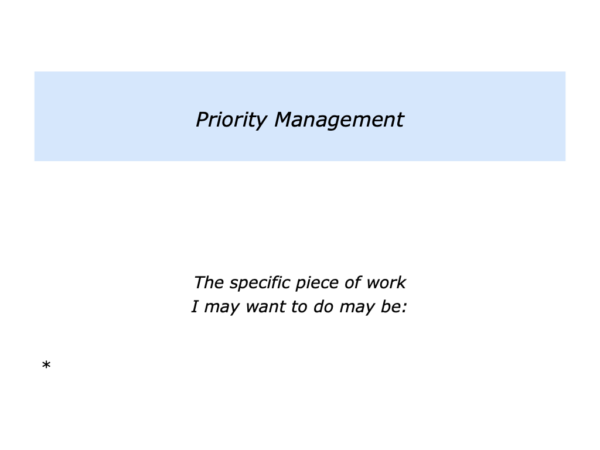
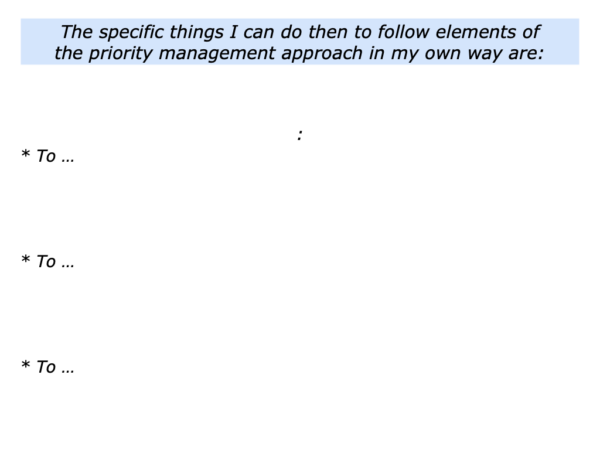


Leave a Reply